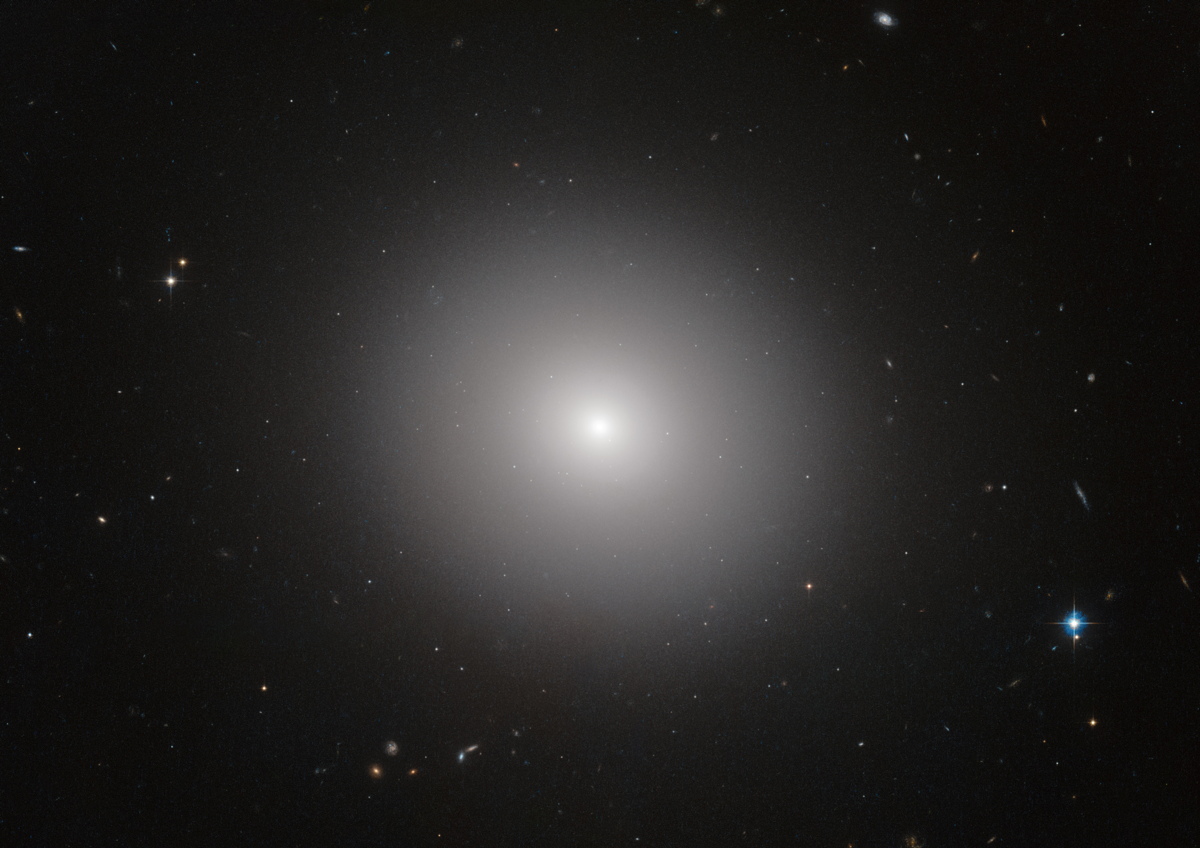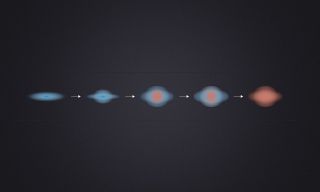Colossal Ancient Galaxies Die from the Inside Out

The largest ancient galaxies stopped forming stars in their cores about three billion years after the Big Bang, with this end of star birth spreading from the inside out in so-called "dead" galaxies, scientists say.
A new survey of 22 elliptical galaxies (most of which were the same size or larger than our own Milky Way) revealed that the most massive galaxies from about 10 billion years ago have stopped forming stars in their centers while formation continued on the outskirts.
"These galaxies lived 10 billion years in the past — three billion years after the Big Bang — and are star-forming at high rates, and are the progenitors of the massive dead galaxies of today's universe," lead author Sandro Tacchella, a Ph.D. student at ETH Zurich's institute for astronomy in Switzerland, told Space.com. [Top 10 Star Mysteries of All Time]
The survey of ancient elliptical galaxies adds fuel to an ongoing debate about how the star shutdown occurs. One leading theory says that a supermassive black hole drives gas out and disrupts star formation, while the other supposes there is a yet-unexplained mechanism that switches off the gas supply in the center.
Tacchella said data from his study would support either of these two contentions, or even a combination of the two. Also interesting was the smaller, elliptical galaxies from this era were still churning out stars throughout their masses. Why is still poorly understood.
"The smaller galaxies are doubling their mass at the same pace in their inner and outer parts," he said. He added this same phenomenon was observed in younger galaxies closer to us.

Solving the mystery
Tacchella said he tackled this research problem because he is interested in how galaxies form stars in terms of physical mechanisms.
Get the Space.com Newsletter
Breaking space news, the latest updates on rocket launches, skywatching events and more!
Figuring out what stopped the star formation in these massive galaxies will require more observations, he said. Astronomers call these elliptical galaxies "red and dead" as they contain a lot of old, dead red stars, but fewer blue youngsters.
The study of 22 galaxies ate up 300 hours of observing time between the orbiting Hubble Space Telescope and the European Southern Observatory's Very Large Telescope in Chile. The VLT looked at the spectra (light distribution) of stars, showing where the young ones were. Hubble was used to trace the older stars, showing the stellar mass distribution of galaxies.
The sheer amount of time would be difficult to replicate given the high observing time demands on these observatories, Tacchella said. He plans a further, focused study with Hubble that will look at the 10 largest galaxies to study their star formation habits more closely.
Better resolution will soon be available to astronomers as well as new observatories come online that can peer further back in time to galaxies that formed closer to the Big Bang, Tacchella said.
NASA's James Webb Space Telescope is set to fly in 2018. On the ground, the most massive optical telescope in the world – the European Extremely Large Telescope (E-ELT), with a 39-meter (128-foot) mirror – is expected to be finished by 2024.
The research was published today in the April 16 edition of the journal Science.
Follow Elizabeth Howell @howellspace, or Space.com @Spacedotcom. We're also on Facebook and Google+. Originally published on Space.com.
Join our Space Forums to keep talking space on the latest missions, night sky and more! And if you have a news tip, correction or comment, let us know at: community@space.com.

Elizabeth Howell (she/her), Ph.D., is a staff writer in the spaceflight channel since 2022 specializing in Canadian space news. She was contributing writer for Space.com for 10 years before joining full-time. Elizabeth's reporting includes multiple exclusives with the White House, speaking several times with the International Space Station, witnessing five human spaceflight launches on two continents, flying parabolic, working inside a spacesuit, and participating in a simulated Mars mission. Her latest book, "Why Am I Taller?" (ECW Press, 2022) is co-written with astronaut Dave Williams.
Most Popular

